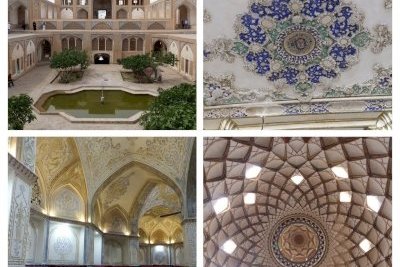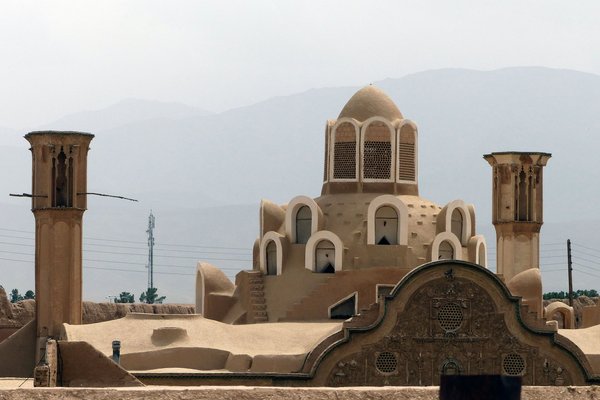Iran
The Historical-Cultural Axis of Fin, Sialk, Kashan
The Historical–Cultural Axis of Fin, Sialk, Kashan comprises historical sites such as Tepe Salk and Fin Garden. Tepe Salk comprises an old settlement and a ziggurat from around 3000 BC. Fin Garden is one of the Persian Gardens that are already on the WH List.
Site Info
Official Information
- Full Name
- The Historical-Cultural Axis of Fin, Sialk, Kashan (ID: 5187)
- Country
- Iran
- Status
-
On tentative list 2007
Site history
History of The Historical-Cultural Axis of Fin, Sialk, Kashan
- 2007: Added to Tentative List
- Added to tentative list
- Type
- Cultural
- Criteria
Links
- UNESCO
- whc.unesco.org
All Links
UNESCO.org
- whc.unesco.org — whc.unesco.org
Community Information
- Community Category
- Urban landscape: Arabic and Middle Eastern
Travel Information
Recent Connections
News
No news.
Recent Visitors
Visitors of The Historical-Cultural Axis of Fin, Sialk, Kashan
Community Reviews
Show full reviewsSolivagant
The Historical-Cultural Axis of Fin, Sialk, Kashan
The Historical-Cultural Axis of Fin, Sialk, Kashan (On tentative list)

Kashan is a city you may well speed by on the 450km highway between Tehran and Isfahan (or vv in our case in 2017). You might stop briefly to see the Fin Garden situated around 8kms outside the city just off the highway, or you may even, as we did, go into the centre and give it a couple of hours or so to see some of its sights. You will find there yet another Iranian “continuity city” with evidence of human habitation at nearby Tepe Sialk, going back 9k years. In historic times it was significant through the Seljuk and Safavid eras (11th to 16th C). However, the town centre was destroyed by earthquake in 1778 and what is “on show” today is mainly an 18th/19th C historic core with just a few (largely reconstructed) pre-earthquake buildings. The town recovered rapidly, based on large volume silk weaving, and this wealth is represented in many of the sights which date from the Qajar period (1789-1925). Its population in 1960 was still only 50k and that core area has survived the subsequent rapid massive expansion to 400k well.
What are we to make of a T List entry titled “The Historical-Cultural Axis of Fin, Sialk, Kashan”? The concept of an “Axis” to justify the linking together of several sites into a single nomination seems to be a particularly Iranian approach; Its T list also contains the “Ghaznavi- Seljukian Axis in Khorasan”; once had “The Historic-Natural …
Keep reading 0 comments
